AR, Case Study
Hand Gesture Controls for Focus
Problem: In today’s tech-driven world, overwhelming clutter leads to unfocused users, impacting mental health and productivity. Current operating systems lack built-in focus features, causing attention deficits and decreased efficiency.
Solution: The intent-driven spatial operating system simplifies interactions, minimizing distractions and reinforcing user intent. By decluttering the digital environment, it enhances productivity and mental well-being, addressing challenges caused by technological overload.

Case Study: Enhancing Focus and Efficiency Through Hand Gesture Controls
Dillon Hickey
The following case study is theoretical and reflects my views on the opportunities augmented and virtual reality technology present.
AbstractDillon Hickey
The following case study is theoretical and reflects my views on the opportunities augmented and virtual reality technology present.
This case study explores the potential of intent-driven spatial operating systems to address the negative impact of technological clutter on mental health. By leveraging immersive experiences, intuitive hand gestures, and blurring effects, the OS aims to create a distraction-free environment that enhances user focus and efficiency. This study outlines a step-by-step implementation process, including activating the OS with a swipe, using pinch-and-zoom for immersive app experiences, and employing eye tracking to maintain focus. The expected outcomes include improved task efficiency, increased attention spans, and potential reduction of depression and suicide rates. Despite challenges in hardware requirements and potential conflicts with quality of experience versus profitability, the study emphasizes the importance of collaborative efforts to promote a more mindful and user-centric digital future.
Introduction
In today’s technologically driven world, users have access to more information and opportunity than ever. However, mental health has been sacrificed for this connection with depression, suicide rates, and attention deficits all on the rise. In this age of cluttered technology, an opportunity for user-intent driven development has risen.
Background
To address the clutter in the technological world leading to increased depression, suicide rates, and attention deficits, user-intent driven design has the opportunity to truly help struggling users. With the launch of Apple’s VisionPro potentially signifying the entrance to the spatial web on a mass adoption level within just a few years, user behavior can be modified to subconsciously assist in focus of users and to minimize distraction, teaching users to be intentful with their usage of technology. Today, companies like Apple are taking advantage of focus modes to allow users to customize their digital distraction; however they are not baked into the operating system at a standard level. Instead of having a user being blindly led into overwhelming situations, immersive operating systems can be specifically designed to mitigate distraction.
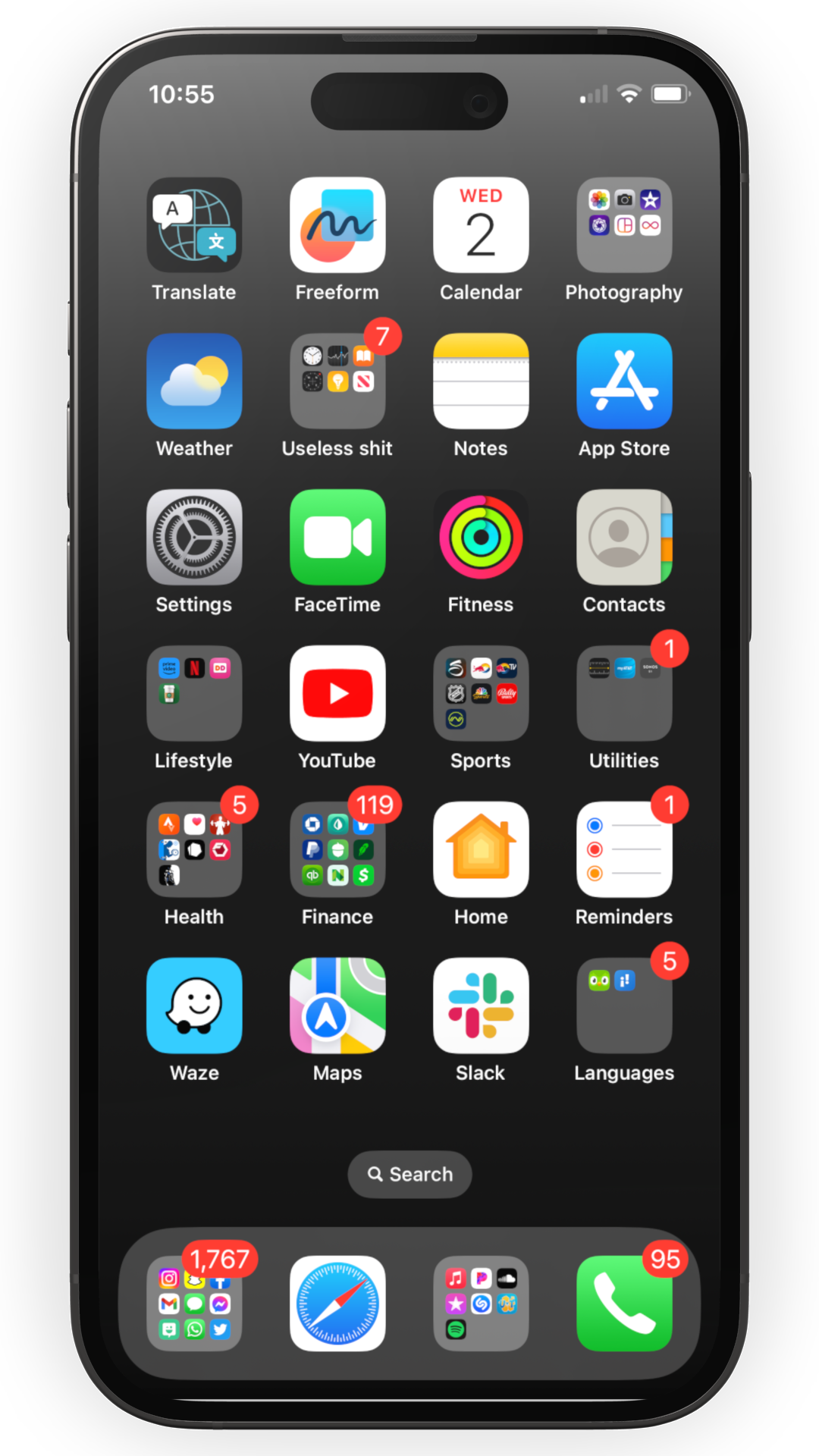

Default iOS Home Screen without Focus Mode
iOS Home Screen with Focus Mode
Methodology
User-intent driven design should revolve around making it as easy as possible for a user to accomplish the task required of them and should not distract users with unnecessary content. To design a spatial OS with the goal of making it as easy as possible for users to focus on the specific activity they are doing and mitigate ambient noise during use, current human-machine interactions need to be reframed based on current user habits. For instance, pinch and zoom in increases the size of content on devices today, but it can also be utilized to also open applications, creating a subconscious focus by visually immersing the user in their action. Slight blurs and frosted glass effects can be used to increase focus and alleviate distractions from technical noise. Pushing and pulling physical objects in workspaces can also be utilized in a spatial digital environment to increase or decrease emphasis on the object being interacted with.
Implementation
To create a spatial OS experience based on building flow states and mitigating distractions, a flow of using the OS could appear something like the steps below:
- A user swipes to activate the OS, overlaying a homepage-style interface of their most visited applications.
- The user would then “pinch-and-zoom in” to launch the immersive experience of entering an app, subconsciously clearing all distractions around them both at an OS level and a physical world level.
- The user could then use the app in focus, and when needing to change activities, they can swipe on the edge of the window to reopen the homepage-style interface, side by side with the open window.
- Blurs based on the Z position of the windows could be utilized to maintain focus on the current task, and pushing and pulling hand gestures can alter the Z position of the open windows.
- Swiping a window away can close it.
- Finally, a user could “pinch-and-zoom-out” to return to the homepage-style interface of applications.
- Future iterations could explore eye tracking and face direction as a more sophisticated and streamlined approach to maintaining focus screens.


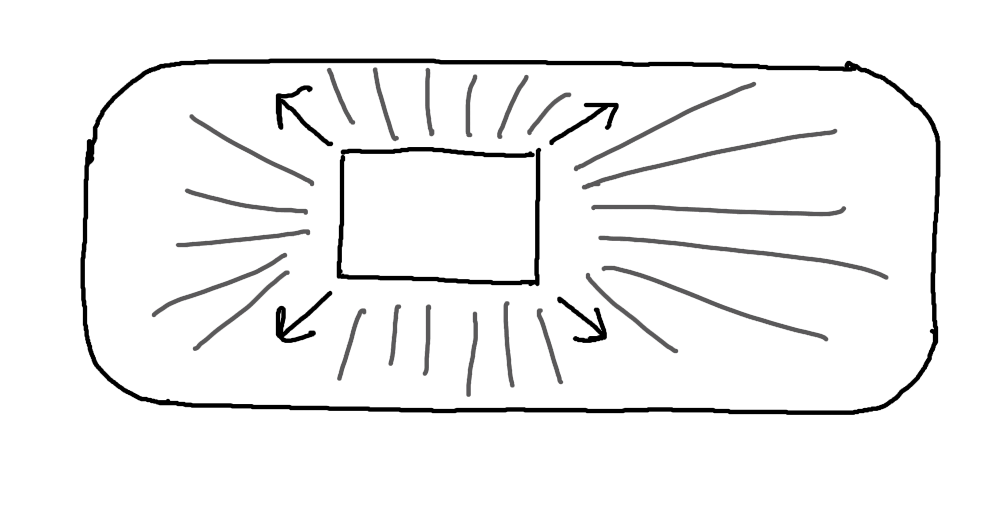



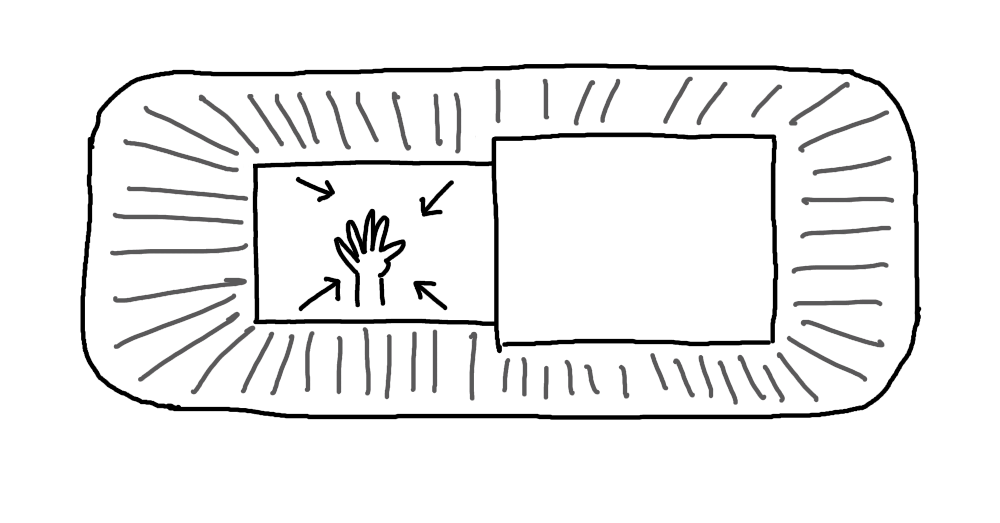
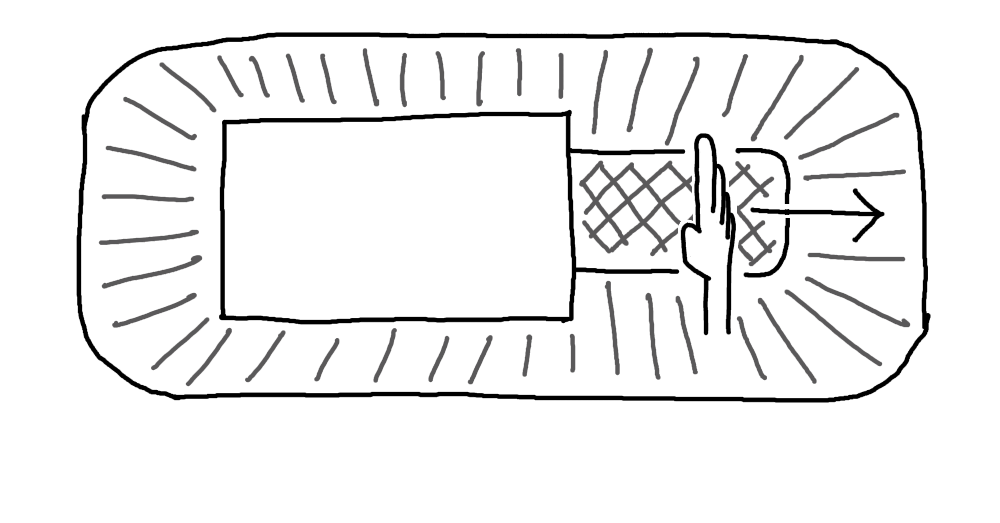
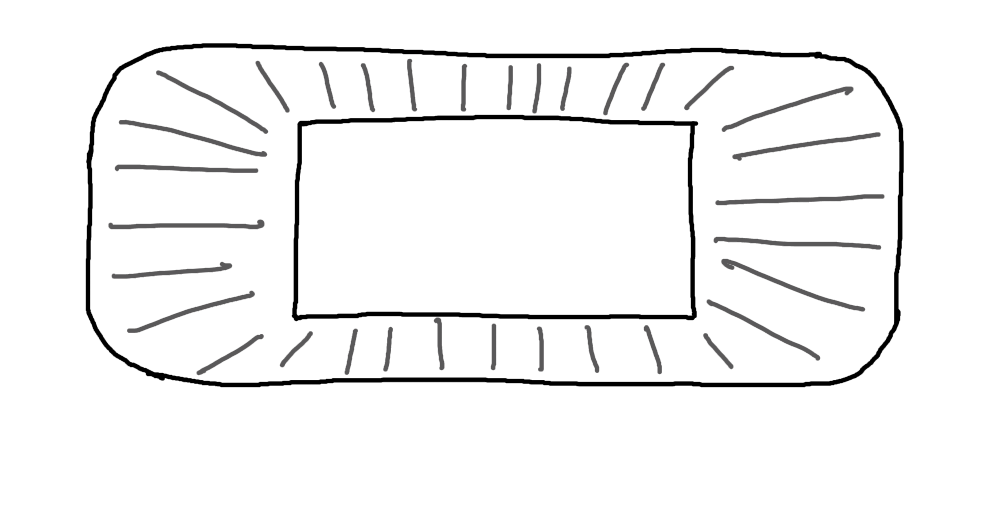

Expected Results and Observations
Based on the described flow, users could hypothetically observe several positive outcomes:
Improved Efficiency: Users would theoretically observe an increase in efficiency in tasks due to a decrease in distractions. Without the constant distractions popping up users would be able to focus significantly better and accomplish tasks at a significantly more efficient rate. A new notification system can be designed as well to remove notification dots from other applications and windows and can utilize AI and machine learning to create a prioritization list without needing user input. The user can then act on that prioritization list without additional user workload to prioritize the activities, which is often a gateway to inefficiency. Improved efficiency can be tested by having users perform comparable tasks on a standard OS as well as the intent-driven OS and comparing performance times.
Increased attention spans: Users are forced to be more intentful with their actions due to the immersive nature of their interactions that user brains would hypothetically be retrained to focus more attentively on the task at hand. The usage of blurs and frosted glass throughout the OS would actively guide the user’s brain back to the activity they are engaged in if their mind begins to wander. Increased attention spans could be tested using eye tracking as well as qualitative interviews with users around the experiences.
Decreased depression and suicide rates: Theoretically speaking, having users spend less time on distracting applications and more time focusing on their task at hand, the users would become more intentful with their actions and would be sucked into the rabbit hole of technology significantly less. This can lead to improvements in general mental health, specifically speaking to bouts of depression due to feelings of unfulfillment from time wasted while doom scrolling. This can be tested through a series of qualitative user interviews over time using the redesigned intent-driven OS.
Limitations and Future Directions
Hardware Requirements: The largest limitation of immersive, focus-based hand gesture controls is the hardware required to utilize hand gestures. Ideally, an OS like the one described in this case study is operated using AR glasses. The same gestures can be utilized on an AR headset, however currently there are few on the market and the models available are far too expensive to be adopted on a mass scale and are too bulky for regular use. Moving forward into the future, AR operating systems will likely become standard for users;however it is difficult to predict the timeline for adoption. For use in today’s era, the AR hand gestures can be modified to be used on any touch-screen device, but would have to be built in at an OS level to reap the benefits.
User Adoption: A second limitation to the creation of focus based hand gestures is user adoption. Users would need to mass adopt AR glasses and/or headsets in order to see the most use out of the hand gestures being proposed. Price and ease of use are two barriers that would have to be broken in order for users to get the most value out of the mentioned gestures.
Profitability of Big Tech: A third limitation is that it would likely cut into profitability of technology companies that see increases in revenue when users spend more time on their platform. By guiding user’s focus onto the task they are trying to accomplish instead of providing them with content related to their task, tech companies specializing in distraction will see lower engagement and lower profits. With the control of the technology industry being in the hands of the companies it is today, it may be difficult to implement focus based hand gestures at an OS level. However, this does provide companies the opportunity to change in a more ethical manner to cater to user’s needs and experiences.
Conclusion
In conclusion, the concept of an intent-driven spatial operating system shows promise in mitigating the negative impact of technological clutter on mental health. By integrating immersive experiences and intuitive hand gestures, this OS aims to foster a focused and distraction-free digital environment. The envisioned benefits include improved efficiency, increased attention spans, and a potential reduction in depression and suicide rates. However, challenges such as hardware requirements need to be addressed for mass adoption. With collaborative efforts and ethical considerations, we can create a future where users engage with technology more consciously, promoting productivity and overall well-being.